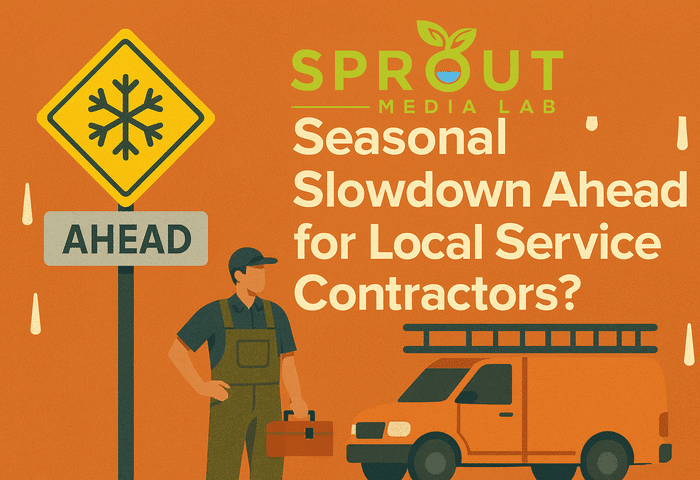What Every Business Should Prepare Before January 1st
As the year winds down, most business owners feel the pressure of wrapping up projects, closing out financials, and shifting into holiday mode. But what often gets overlooked is one of the most important responsibilities of all:
Building a strategic, data-driven marketing plan for the year ahead.
Planning before January 1st gives you a clear roadmap, better forecasting accuracy, and a smarter, more intentional way to spend your marketing dollars. Whether you’re a local service company, an e-commerce brand, a professional service provider, or a growing startup, this checklist will help you enter 2026 confident and ready.
Below are the must-have components every business should work through before the new year hits.
Review What Worked (and What Didn’t) in 2025
Before planning ahead, evaluate the past.
Ask these questions:
- Which campaigns drove the most revenue?
- Which marketing channels underperformed?
- What was your cost-per-lead or cost-per-sale?
- Did seasonality affect sales?
- Which customer segments were most profitable?
- What offers or services gained the most traction?
This step alone can save thousands in wasted spend and uncover opportunities hiding in plain sight.
Set Clear, Measurable Marketing Goals for 2026
Generic goals like “get more customers” or “improve our marketing” don’t work.
Instead, set SMART goals such as:
- Increase lead volume by 20% by Q3
- Grow email list by 10,000 subscribers
- Rank on Page 1 for 5 high-value keywords
- Increase conversion rate from 2.5% → 4%
- Improve customer retention by 15%
Clear goals dictate the campaigns, budgets, and strategies you’ll need to implement.
Reevaluate Your Ideal Customer – They May Have Changed
Markets shift. Buyer behavior evolves. New competitors enter. AI impacts decision-making.
Before 2026, revisit:
- Who your best current customers actually are
- Which customers produce the highest ROI
- Which audiences no longer align with your values or goals
- How customer pain points or expectations have changed
Your messaging, offers, and ad targeting depend on this clarity.
Identify Marketing Campaigns to Keep, Improve, or Retire
Every business should take a moment to assess its active campaigns:
Keep:
If a campaign is profitable, improving, and aligned with your 2026 goals – keep it.
Improve:
If something is underperforming but still relevant, optimize it:
- rewrite ad copy
- enhance landing pages
- improve audience targeting
- upgrade tracking
- refresh creative
Retire:
If a channel hasn’t delivered results in months, stop sinking money into it.
This ensures your 2026 budget fuels what matters.
Audit Your Website for Conversion & Performance
Your website is the core of your marketing ecosystem. Before the new year, audit:
- Page speed
- Mobile usability
- Conversion pathways (CTA clarity, forms, pop-ups)
- SEO structure
- Content gaps
- User experience issues
- Branding consistency
A small website improvement in December can create massive ROI in Q1.
Strengthen Your SEO Foundation Going Into 2026
SEO is a long game – meaning winter is the best time to get ahead.
Make sure:
- Your metadata is optimized
- Technical SEO issues are fixed
- You have sufficient service/product pages
- New content is planned for Q1–Q2
- You add FAQs, schema, internal links
- You’re ready for continued shifts in AI search and answer engines
Businesses that invest in SEO before January see the biggest gains by spring.
Plan Your 2026 Content Strategy & Editorial Calendar
Consistency wins. But consistency requires planning.
Outline:
- Monthly themes
- Blog topics
- Seasonal campaigns
- Social media content
- Email newsletters
- Video ideas
- Lead magnets
Pre-planned content reduces stress, increases quality, and keeps your brand visible year-round.
Upgrade Your Tech Stack & Automations
Your tools determine your efficiency.
Look at:
- CRM systems
- Email marketing automation
- Social media scheduling tools
- AI-powered writing/analysis tools
- Reputation management tools
- Analytics dashboards
- AI chatbots or lead capture tools
If your tools slowed you down this year, it’s time to upgrade before January.
Build Your 2026 Marketing Budget
A solid marketing budget should allocate funds across:
- SEO
- Paid ads
- Website improvements
- Email marketing
- Content creation
- Branding or rebranding
- Software and tools
Your budget should match both your goals and your growth stage.
Prepare Your First 90 Days of 2026 (Q1 Action Plan)
Your Q1 plan should be crystal clear by January 1st.
It should include:
- Campaigns launching in January
- Content going live
- Website improvements
- SEO initiatives
- Paid ad calendar
- Promotions or seasonal pushes
- Lead generation goals
If Q1 is tight, the entire year feels rushed.
Create or Refresh Your Brand Messaging for 2026
Messaging drives conversion.
Review:
- Your core value proposition
- Your elevator pitch
- Your differentiators
- Your tone and brand voice
- The emotional triggers your audience responds to
- The problems you uniquely solve
Strong messaging makes every campaign more effective.
2026 Is the Year of Being Proactive… Not Reactive
Most businesses wait until February or March to “get serious” about marketing. The ones that plan early grow faster, spend smarter, and dominate their competitors.
Now is the moment to:
✔ review
✔ realign
✔ refine
✔ rebuild
✔ re-strategize
Before the new year hits.
Need Help Building Your 2026 Marketing Plan?
Sprout Media Lab helps businesses build high-ROI, data-driven marketing plans that drive predictable growth.
If you want help reviewing your 2025 results, mapping out your 2026 strategy, or identifying your biggest opportunities…
Sprout Can Help!
For a FREE 30-Minute Digital Marketing Consultation, click here or call us at (800) 617-6975










